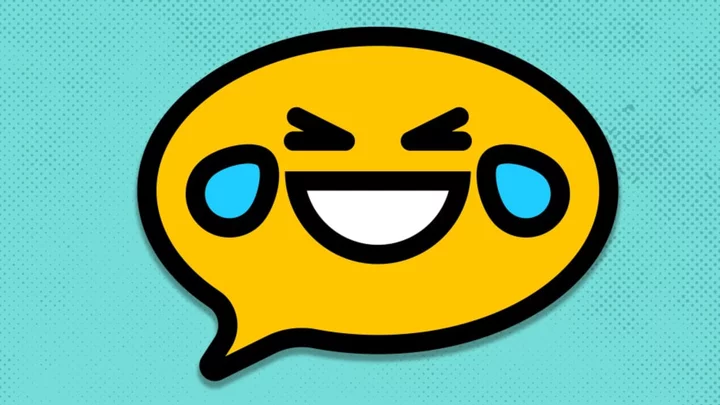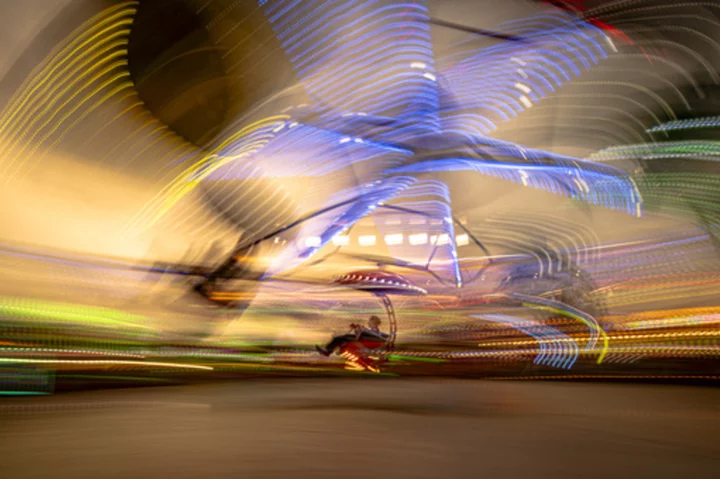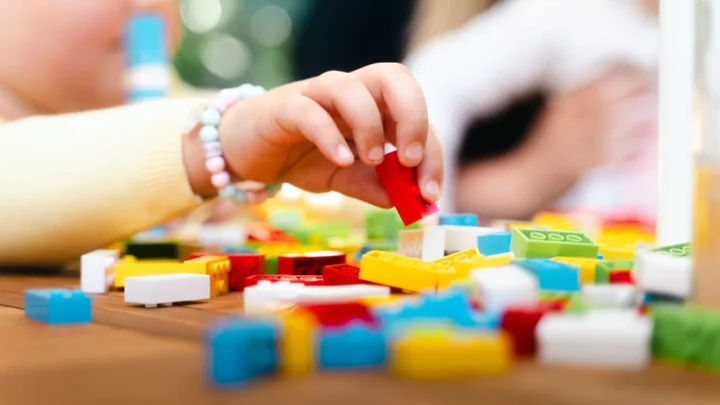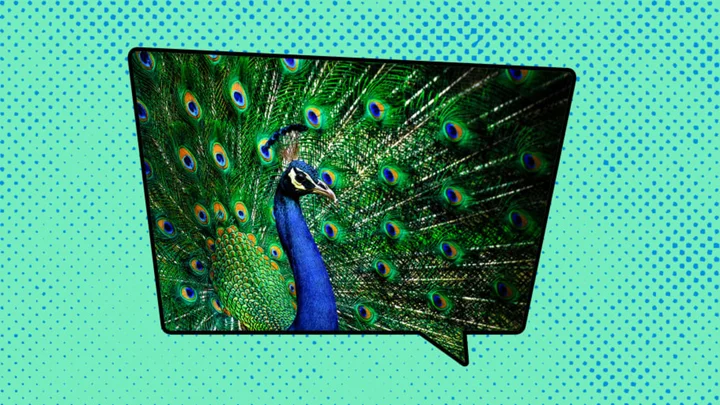We can’t actually hear someone chortle or guffaw through the internet, but we still want to express our emotions. Luckily, internet residents have come up with a whole slew of ways to convey laughter online. Here are 16 of them.
1. IJBOL
One way to laugh online that’s gaining popularity is IJBOL, which means “I just burst out laughing” (it’s pronounced “eej-bowl”). “The term,” The New York Times explains, “is not necessarily novel or different from how other iterations of internet laughter are used, but it describes something people actually do: explode into an audible, full-belly guffaw.” IJBOL may date back to 2009, but according to Dictionary.com, “it was rarely used” then. Its resurgence began within the K-pop community in 2021, which led many to assume it was a Korean term. IJBOL is currently a favorite of Gen Zers and frequently appears on social media platforms like TikTok.
2. LOL
The classic acronym for laughing out loud (it may once have meant “lots of love” or “little old lady,” but it doesn’t anymore). However, lol has been around long enough now—more than 30 years—that it doesn’t really mean out-loud laughter either—linguist John McWhorter says it now indicates empathy. For genuine laughter, make sure to emphasize it somehow: all-caps LOL is a good start, or try one of the longer variants below. (Lol doesn’t count as emphasis; it’s probably just autocorrect.)
3. Other Spellings of LOL
When we treat lol as just a word rather than an acronym, it means that we can change things about the letters just to indicate a different pronunciation, and without trying to come up with something they stand for. Changing the vowel, as in lel and lawl, indicates a more laid-back, less-laugh-y response, whereas repeating part of the word, as in lollll and lololol, indicates more actual laughter. And the combination of all-caps and reduplication—LOLOLOLOL—is the most likely to be genuine laughter of all the lol-variants, the more -OLs the better.
4. LMAO, ROFL, and Other Laughing Acronyms
It’s not just lol—there are other acronyms indicating laughter, such as lmao, lmfao, rotfl, rotflol for laughing my ass off, rolling on the floor laughing (out loud), and of course they can also be capitalized for emphasis. Lmao and lmfao are still relatively common, but while ROTFLOL had a great cameo in Weird Al’s “White and Nerdy,” it and rotfl have gotten rarer—these days, you’re more likely to see rofl with the word the omitted, or the rofl emoji.
5. Words Made from LOL
Lollerskates, lollercoaster, loltastic, roflcopter—these words are fantastically creative, but like rofl, they seem pretty vintage early 2000s. Perhaps they’re due for an ironic revival? Another expansion is lulz, but it’s more of a noun than an emotive response: You can do something for the lulz or say that “much lulz were had.”
More Articles About Phrases and Sayings:
5. Haha
Another classic laughter expression that, like lol, has weakened through repeated use. Plain haha or autocorrected Haha are sufficient for mild amusement, but for true laughter, go for all-caps HAHA or one of the expansions below.
7. Expansions of Haha
You can go shorter, for less amusement (ha, aha, heh), or longer, for greater amusement (hahahaha, bahaha, ahaha). You can also vary the consonant (bahaha, gahaha) or the vowel (heh, hehe, heehee). Typos, like ahha or hahahaah, may indicate you’re laughing too hard to type properly. Caps, as ever, for emphasis. Combining them is not common (you’ve likely never seen *behehe or *ahehahe or *abaha, and even BAHAHA is rarer than HAHAHA).
8. Evil Laughter
Fairly straightforward: evil or mock-evil is expressed as a variant on mwahaha or muahahah, with the usual caveats about reduplication of ha and all-caps for emphasis.
9. Haha in Other Languages
Other languages use repetitions of different symbols, such as Spanish jajajaja (that’s the “j” sound as in jalapeño), Thai 5555 (the number 5 is pronounced “ha”), or Korean ㅋㅋㅋㅋ (pronounced “kkkk”—vowels are only written for louder laughter). A few languages also have their own acronyms, such as French mdr (mort de rire, “dying of laughter”).
10. Third Person Narration
You can also choose to transcribe what you’re doing in the third person, almost as if you were giving stage directions of yourself. Some platforms may automatically turn g into a “grins” emoji, but you can also write longer versions like *laughs* or *laughs uncontrollably* or *spits water on keyboard*. This style is less common with laughter though, and more common with emotions that are hard to draw and don't have onomatopoeia, such as *sighs heavily* or or #headdesk.
11. Face With Tears of Joy Emoji
The crying-laughter emoji gets its own category because it’s one of the most popular emojis. And it’s definitely the laughiest—in 2015, Instagram engineers found that it was used similarly to lolol, lmao, lololol, lolz, lmfao, lmaoo, lolololol, lol, ahahah, ahahha, loll, ahaha, ahah, lmfaoo, ahha, lmaooo, lolll, lollll, ahahaha, ahhaha, lml, and lmfaooo. And like the lol and haha families, this emoji often gets repeated for emphasis.
12. Other Smiling Emojis and Emoticons
If you’re not a fan of the tears of joy emoji (which unfortunately for Millennials is seen as not cool anymore), there are lots of other happy emoji you could use. You could also use simple emoticons, such as :) :') :-) :D :'D :-D XD =D. The problem with this set, though, is that it’s not obvious that they’re laughing as opposed to just smiling, which is something that the tears of joy emoji makes quite clear. Adding a tear to the emoticons may help, or repeating them in full (or in part, like :DDDDD).
13. Sticker
If an emoji isn't quite big enough to express your laughter, you can go for a sticker, at least in platforms that support them such as Facebook or Whatsapp. Unlike words, emoticons, or emoji, it's not common to repeat a sticker for emphasis, probably since they’re already so large.
14. Reaction GIFs
For even bigger and more specific kinds of laughter, we recommend the reaction gif, which really get at why we’d bother having so many ways to express laughter online—there’s a whole lot of ways of laughing. You may need to do a little digging to find the right gif, or you could keep a folder with useful-looking gifs as you come across them.
15. An Image or Video Clip of Your Own Face
Or maybe you’d like to be more personal with your laughter than a gif of someone else can convey? Well, in that case, if you’ve got quick reflexes and can pull up an app while you’re still laughing (or if you’re a good actor), you can grab a picture or short video using Snapchat, Instagram, or TikTok and post it or send it along. And if you have an iPhone and have taken the time to make a Memoji that looks like you, consider using it—Apple has a few laughing and smiling options that will get the job done.
16. Not Actually Laughing
Finally, if you’re opposed to hyperbole, you could always go in the other direction. May we recommend LQTM (“laughing quietly to myself”) or, for the ultra-literalists, NE (“nose exhale”)?
A version of this story ran in 2015; it has been updated for 2023.
This article was originally published on www.mentalfloss.com as 16 Ways to Laugh Online.









